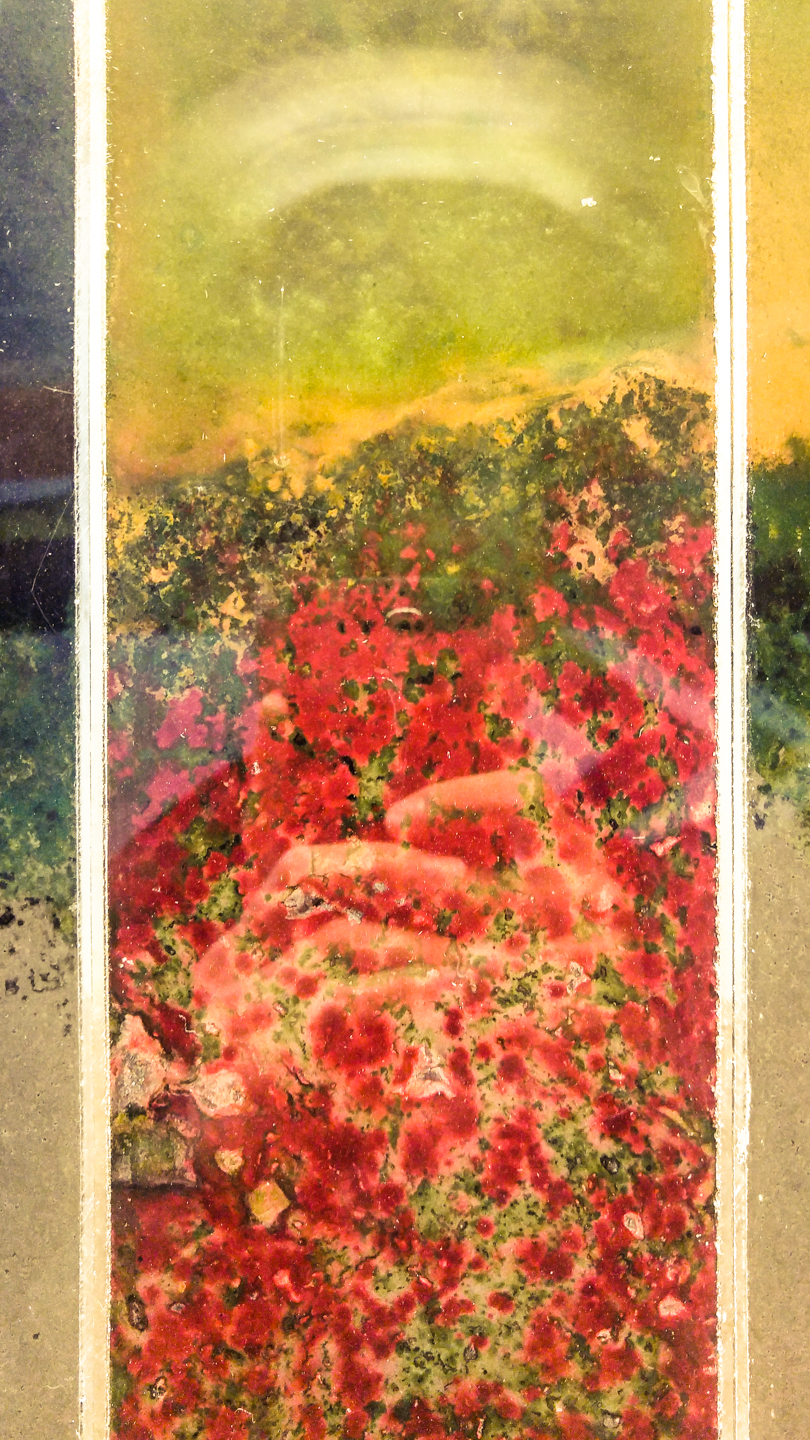Mud
Written by Louis Ho
Nicole Clousten is a practice-based researcher at York University and an artist at the Coalesce BioArt Lab at the University of Buffalo. Her cabinet, Mud, is an ominous display acrylic prisms that house mud collected from the Lake Ontario shoreline. After being exposed to light, the slabs became enriched with a teeming community of microbial life.
Clousten’s had a “strong desire to engage microbial life” depicting the “complex communities that feed us, protect us from pathogens, produce vitamins and more that we have yet to understand”. Face-to-face with this microbial soup, a casual observer may be grossed out, repulsed even. But a closer look reveals intricate morphological details that start to emerge.
Bright colours that contrast the dark background.
Mud forces us to directly confront microbial life and their significance in our lives. As
Clousten added, ‘Recognizing the enmeshed nature of our bodies may push us to foster stronger, most sustainable, and empathetic relationship with our ecosystem as a whole’. It is no surprise that they play such a crucial role in our present lives and in our evolutionary past. As our knowledge of microbial life grows, it directly forces us to consider the intimate relationship that microbes have in our lives.
